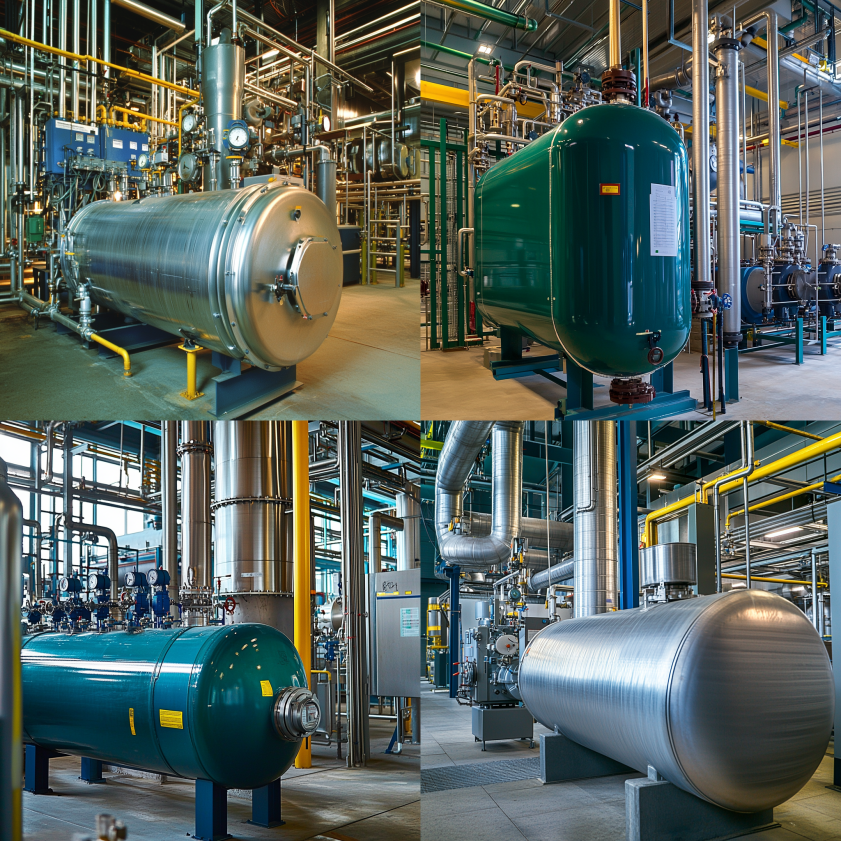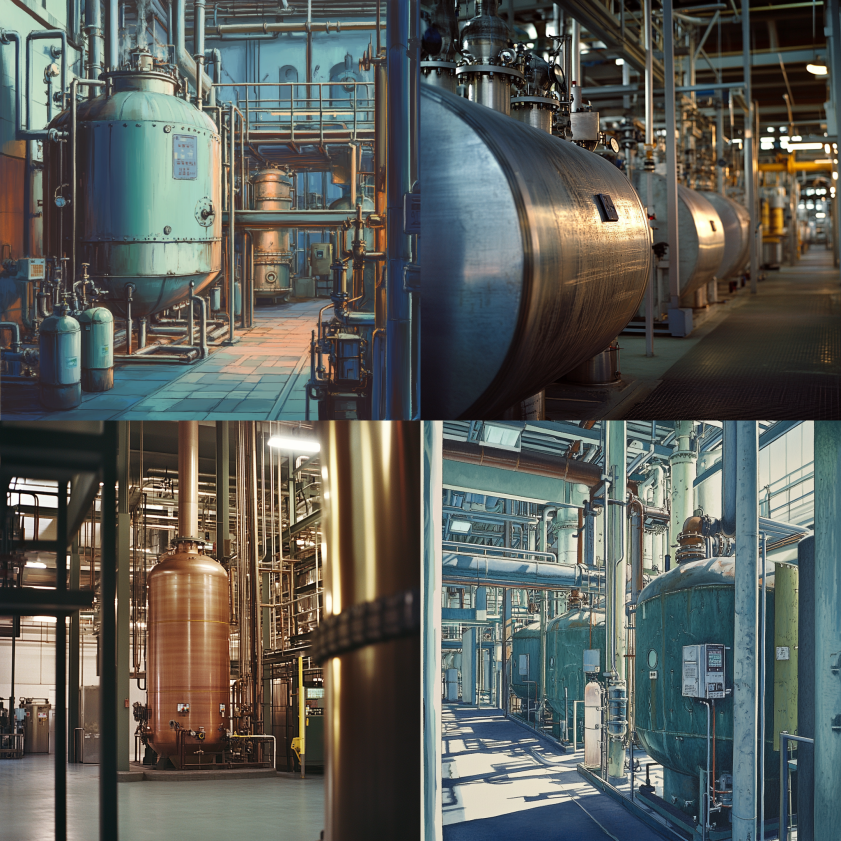
Understanding how an unfired pressure vessel example fits into modern industry is essential for engineers, plant operators, and safety managers alike. An unfired pressure vessel example illustrates how pressurized systems work without direct exposure to combustion—making them safer, more cost-efficient, and widely used across various sectors. In this guide, we break down what an unfired pressure vessel example looks like, its applications, basic design principles, and crucial safety considerations.
Pressure vessels are critical in many industrial processes—especially when it comes to storing or transporting gases and liquids at high pressures. An unfired pressure vessel example typically refers to equipment that holds pressurized contents without any internal combustion or flame-based heat source.
Whereas fired pressure vessels (like boilers) generate internal pressure through combustion, an unfired pressure vessel example operates via external input such as pumps, compressors, or heat exchangers. This classification makes the unfired pressure vessel example inherently safer, easier to maintain, and often more cost-effective.
Common real-world unfired pressure vessel examples include:
Each unfired pressure vessel example plays a crucial role in ensuring system stability, energy efficiency, and overall operational safety.

Understanding what qualifies as an unfired pressure vessel becomes clearer when we look at real-world applications. Below are several prominent examples used across industrial settings.
Shell and tube heat exchangers are one of the most common examples of unfired pressure vessels. These systems transfer heat between two fluids without direct flame exposure. One fluid runs through a bundle of tubes, while another circulates through the tubes within a sealed shell. The goal is to allow heat exchange without mixing the fluids.
Widely used in oil refineries, chemical plants, and power generation, these heat exchangers help regulate process temperatures while maintaining system pressure. Because they operate under pressure and without internal combustion, they qualify as unfired pressure vessels.
Learn more about heat exchangers from The Engineering Toolbox.
An air receiver is another classic example of an unfired pressure vessel. It serves as a storage tank for compressed air systems, providing a buffer to handle fluctuations in demand and allowing compressors to run more efficiently.
An external source pressurizes air receivers—typically a rotary screw or piston compressor—making them ideal for managing load cycles in manufacturing, construction, and energy sectors. Since there’s no combustion source involved, these vessels are categorized as unfired.
Surge tanks are designed to absorb pressure spikes in fluid systems. Common in water treatment and oil pipeline infrastructure, these tanks protect the system from water hammer or rapid changes in pressure that can cause mechanical damage.
The tank functions by temporarily storing fluid and then releasing it as needed to stabilize pressure. While it operates under variable pressure, it doesn’t involve any combustion, thus making it an unfired vessel.
Used primarily in boiler systems, deaerators remove oxygen and other dissolved gases from feedwater to prevent corrosion in piping and boilers. Although they’re often located near fired vessels (such as steam boilers), deaerators themselves don’t contain any flame or combustion element.
These systems function using steam generated elsewhere, and their primary role is to pressurize and pre-treat water, qualifying them as unfired pressure vessels.

The preference for unfired pressure vessels in many industries is rooted in their safety profile, operational efficiency, and cost-effectiveness. Below are some compelling reasons why unfired vessels are often the optimal choice.
Since there’s no flame or internal heat source, the chances of thermal failure, explosion, or combustion-related accidents are significantly reduced. This makes unfired vessels inherently safer, especially in facilities where hazardous materials are present.
Without the need for burners, fuel sources, or flame control systems, unfired vessels generally cost less to install and operate. They also require less frequent maintenance, reducing long-term costs and minimizing downtime.
Unfired pressure vessels are used in everything from oil and gas to pharmaceuticals, food processing, and municipal water systems. Their adaptability makes them a go-to solution for applications requiring pressurized environments without direct heating.
The absence of direct flame exposure reduces thermal stress, leading to slower degradation of the vessel material. This often translates to a longer service life, especially when paired with appropriate maintenance protocols.
The safety and performance of unfired pressure vessels hinge on strict design and regulatory compliance. At the heart of these standards is the ASME Boiler and Pressure Vessel Code (BPVC), Section VIII.
For further reference, visit the ASME Boiler and Pressure Vessel Code page.
Unfired pressure vessels play a critical role in keeping industrial systems safe, efficient, and compliant. Whether storing compressed air, facilitating heat exchange, or regulating fluid pressure, these vessels are engineered for performance without the hazards of internal combustion.
By understanding the principles behind unfired pressure vessels—and recognizing real-world examples like heat exchangers, surge tanks, and air receivers—operators and engineers can make informed decisions that enhance system longevity and safety.
As regulatory standards continue to evolve, the importance of working with a qualified, experienced pressure vessel manufacturer cannot be overstated.
Red River specializes in the design and manufacturing of pressure vessels. We also fabricate related items such as prefabricated spools and skid packages.
Reach out to us today and experience the Red River difference. Where American-made products and American Values come together, we care more.
Fired vessels include an internal flame or combustion process to heat their contents, while unfired vessels operate without any internal heat source.
Yes. Without the flame element, unfired vessels have fewer risks related to overheating or explosion, making them safer in many applications.
Industries such as oil and gas, food and beverage, water treatment, chemical processing, and power generation heavily rely on unfired vessels.
Yes. Shell and tube heat exchangers are common examples. They operate under pressure and facilitate heat transfer without combustion.
In most cases, yes, especially when operating under high pressure or large volume. ASME Section VIII provides the rules for certification and design.
Typically, they should be inspected annually or as required by local jurisdiction, service conditions, and material type. Internal inspections may be more frequent based on risk.
Modifications are possible but must comply with ASME standards and be performed by certified professionals to ensure ongoing safety.
This varies based on design and material, but some unfired vessels are rated for several thousand PSI. Always refer to the vessel’s nameplate and documentation.
Unfired vessels are safer, longer-lasting, and more cost-effective than fired alternatives.
Table of Contents
ToggleIn the realm of industrial solutions, Red River emerges as a pioneer, offering a diverse range of custom-engineered products and facilities. Among our specialties is the design and production of Custom/OEM Pressure Vessels, meticulously crafted to meet individual client requirements, ensuring performance under various pressure conditions. Our expertise extends to the domain of prefabrication, where Red River leads with distinction.
The company excels in creating prefabricated facilities, modules, and packages, reinforcing its stance as a forerunner in innovation and quality. This proficiency is further mirrored in their Modular Skids offering, where they provide an array of Modular Fabricated Skid Packages and Packaged equipment. Each piece is tailored to client specifications, underlining their commitment to delivering precision and excellence in every project they undertake.